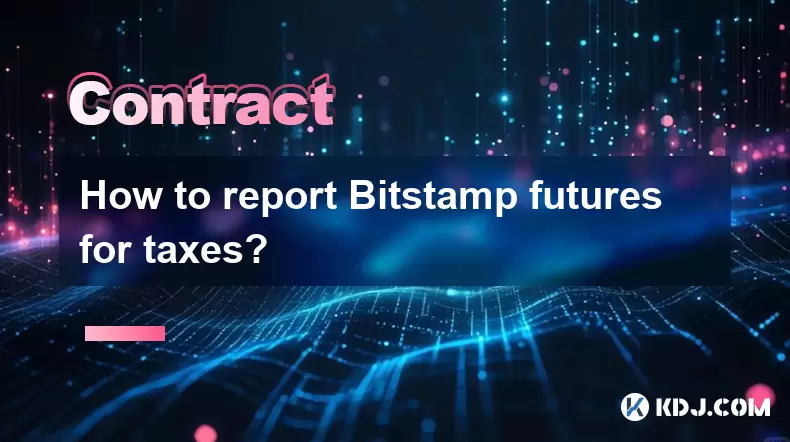-
 Bitcoin
Bitcoin $115200
1.46% -
 Ethereum
Ethereum $3672
2.95% -
 XRP
XRP $3.004
1.51% -
 Tether USDt
Tether USDt $1.000
0.04% -
 BNB
BNB $772.6
3.15% -
 Solana
Solana $168.2
3.14% -
 USDC
USDC $0.9998
-0.01% -
 TRON
TRON $0.3365
1.44% -
 Dogecoin
Dogecoin $0.2053
3.66% -
 Cardano
Cardano $0.7414
2.80% -
 Hyperliquid
Hyperliquid $38.30
0.43% -
 Stellar
Stellar $0.3983
0.73% -
 Sui
Sui $3.496
3.19% -
 Bitcoin Cash
Bitcoin Cash $571.4
4.49% -
 Chainlink
Chainlink $16.75
2.91% -
 Hedera
Hedera $0.2440
2.21% -
 Ethena USDe
Ethena USDe $1.001
0.03% -
 Avalanche
Avalanche $22.18
2.14% -
 Litecoin
Litecoin $120.6
0.40% -
 UNUS SED LEO
UNUS SED LEO $8.991
0.05% -
 Toncoin
Toncoin $3.229
-0.62% -
 Shiba Inu
Shiba Inu $0.00001234
3.28% -
 Uniswap
Uniswap $9.757
3.45% -
 Polkadot
Polkadot $3.666
2.22% -
 Dai
Dai $1.000
0.01% -
 Monero
Monero $282.3
-4.49% -
 Bitget Token
Bitget Token $4.360
1.80% -
 Cronos
Cronos $0.1437
6.19% -
 Pepe
Pepe $0.00001050
4.21% -
 Aave
Aave $263.0
4.02%
What is the difference between the U-based and coin-based Binance contracts? How to choose?
Binance offers U-based contracts settled in USDT and coin-based contracts settled in the underlying crypto, each suited for different trading goals and risk levels.
May 01, 2025 at 08:15 am

The world of cryptocurrency trading offers various instruments for investors and traders to engage with the market. Among these, Binance, one of the leading cryptocurrency exchanges, provides two types of futures contracts: U-based and coin-based. Understanding the differences between these two contract types is crucial for making informed trading decisions. In this article, we will explore the key distinctions between U-based and coin-based Binance contracts and provide guidance on how to choose the right one for your trading needs.
Understanding U-based Contracts
U-based contracts, also known as USDT-margined contracts, are futures contracts that use USDT (Tether) as the margin and settlement currency. This means that when you trade U-based contracts, your profits and losses are calculated and settled in USDT. These contracts are designed to provide a stable trading environment since USDT is pegged to the US dollar.
One of the main advantages of U-based contracts is that they allow traders to speculate on the price movements of various cryptocurrencies without needing to hold the actual coins. This can be particularly beneficial for traders who want to diversify their portfolio without increasing their exposure to different cryptocurrencies. Additionally, U-based contracts often have higher liquidity due to their popularity and the stability provided by USDT.
Understanding Coin-based Contracts
Coin-based contracts, on the other hand, are futures contracts that use the underlying cryptocurrency as the margin and settlement currency. For example, if you trade a Bitcoin-based contract, your profits and losses will be calculated and settled in Bitcoin. These contracts are suitable for traders who are already holding the specific cryptocurrency and want to leverage their existing holdings.
A significant advantage of coin-based contracts is that they allow traders to gain exposure to the price movements of a cryptocurrency without converting their holdings into another currency. This can be particularly useful for long-term holders who believe in the future potential of a specific cryptocurrency. However, coin-based contracts may be less liquid compared to U-based contracts, as they are tied to the liquidity of the specific cryptocurrency.
Key Differences Between U-based and Coin-based Contracts
To better understand the differences between U-based and coin-based contracts, let's examine some key aspects:
Margin and Settlement Currency
- U-based contracts use USDT as the margin and settlement currency.
- Coin-based contracts use the underlying cryptocurrency as the margin and settlement currency.
Liquidity
- U-based contracts generally have higher liquidity due to the stability and popularity of USDT.
- Coin-based contracts may have lower liquidity, as it depends on the specific cryptocurrency.
Exposure
- U-based contracts allow traders to speculate on cryptocurrency prices without holding the actual coins.
- Coin-based contracts are suitable for traders who already hold the specific cryptocurrency and want to leverage their holdings.
Profit and Loss Calculation
- U-based contracts calculate profits and losses in USDT.
- Coin-based contracts calculate profits and losses in the underlying cryptocurrency.
How to Choose Between U-based and Coin-based Contracts
Choosing between U-based and coin-based contracts depends on your trading goals, risk tolerance, and the cryptocurrencies you hold. Here are some factors to consider when making your decision:
Trading Goals
- If your goal is to speculate on cryptocurrency prices without holding the actual coins, U-based contracts may be more suitable.
- If you are a long-term holder of a specific cryptocurrency and want to leverage your existing holdings, coin-based contracts could be a better choice.
Risk Tolerance
- U-based contracts provide a more stable trading environment due to the peg of USDT to the US dollar, which may be more suitable for traders with lower risk tolerance.
- Coin-based contracts expose traders to the volatility of the underlying cryptocurrency, which may be more suitable for traders with higher risk tolerance.
Cryptocurrency Holdings
- If you already hold a specific cryptocurrency and want to trade futures contracts based on that cryptocurrency, coin-based contracts are the obvious choice.
- If you do not hold the specific cryptocurrency or prefer to trade without increasing your exposure to different cryptocurrencies, U-based contracts are more appropriate.
Liquidity Needs
- If you prioritize high liquidity and a more stable trading environment, U-based contracts may be more suitable.
- If you are willing to trade with potentially lower liquidity to gain exposure to a specific cryptocurrency, coin-based contracts could be a better option.
Practical Steps to Start Trading U-based or Coin-based Contracts on Binance
To help you get started with trading U-based or coin-based contracts on Binance, here are the detailed steps you need to follow:
Step 1: Register and Verify Your Account
- Visit the Binance website and click on the "Register" button
- Fill out the registration form with your email address and create a strong password
- Complete the email verification process
- Go to the "User Center" and complete the KYC (Know Your Customer) verification process by submitting the required documents
Step 2: Deposit Funds
- Log in to your Binance account
- Navigate to the "Wallet" section and click on "Fiat and Spot"
- Choose the cryptocurrency you want to deposit (USDT for U-based contracts or the specific cryptocurrency for coin-based contracts)
- Follow the on-screen instructions to complete the deposit process
Step 3: Access the Futures Trading Platform
- From the Binance homepage, click on the "Derivatives" tab
- Select "USDT-M Futures" for U-based contracts or "Coin-M Futures" for coin-based contracts
- Familiarize yourself with the futures trading interface
Step 4: Choose Your Contract and Set Your Position
- Browse the available contracts and select the one you want to trade
- Decide on your position size and leverage
- Set your entry and exit prices
- Place your order (market order, limit order, or stop-limit order)
Step 5: Monitor and Manage Your Position
- Keep an eye on your open positions and the market conditions
- Use the available tools and indicators to analyze the market
- Adjust your stop-loss and take-profit levels as needed
- Close your position when you reach your desired profit or loss level
Frequently Asked Questions
Q: Can I switch between U-based and coin-based contracts on Binance?
A: Yes, you can switch between U-based and coin-based contracts on Binance by navigating to the respective futures trading platforms. However, keep in mind that you will need to have the appropriate funds (USDT for U-based contracts or the specific cryptocurrency for coin-based contracts) in your account to trade each type of contract.
Q: Are there any fees associated with trading U-based and coin-based contracts on Binance?
A: Yes, Binance charges various fees for trading futures contracts, including trading fees, funding fees, and withdrawal fees. The specific fee structure may vary depending on your trading volume and the type of contract you are trading. It's essential to review Binance's fee schedule before starting to trade.
Q: Can I use the same account to trade both U-based and coin-based contracts on Binance?
A: Yes, you can use the same Binance account to trade both U-based and coin-based contracts. However, you will need to ensure that you have the necessary funds in your account to cover the margin requirements for each type of contract.
Q: How can I manage the risk when trading U-based and coin-based contracts on Binance?
A: To manage risk when trading futures contracts on Binance, you can use various risk management tools and strategies, such as setting stop-loss orders, diversifying your portfolio, and using proper position sizing. It's also crucial to stay informed about market conditions and adjust your trading strategy accordingly.
Disclaimer:info@kdj.com
The information provided is not trading advice. kdj.com does not assume any responsibility for any investments made based on the information provided in this article. Cryptocurrencies are highly volatile and it is highly recommended that you invest with caution after thorough research!
If you believe that the content used on this website infringes your copyright, please contact us immediately (info@kdj.com) and we will delete it promptly.
- OZAK AI: Is This AI Product Poised for ChatGPT-Level Returns?
- 2025-08-07 03:30:13
- SEC, Liquid Staking, and Crypto: A New Dawn?
- 2025-08-07 03:30:13
- Bitcoin, Ozak AI, and Crypto Veterans: A New York Minute on What's Hot
- 2025-08-07 02:31:03
- KakaoBank Eyes Stablecoin Market: A New Era for Digital Assets in South Korea?
- 2025-08-07 02:31:03
- Ethereum's Scaling Saga: Gas Limits, Leadership, and the Road to 100M
- 2025-08-07 02:50:40
- Bitcoin Income Evolution: Decoding YBTC and the Future of Crypto Yield
- 2025-08-07 02:50:40
Related knowledge

Why is my Bitstamp futures position being liquidated?
Jul 23,2025 at 11:08am
Understanding Futures Liquidation on BitstampFutures trading on Bitstamp involves borrowing funds to open leveraged positions, which amplifies both po...

How to report Bitstamp futures for taxes?
Jul 30,2025 at 08:35am
Understanding Bitstamp Futures and Taxable EventsWhen trading Bitstamp futures, it’s essential to recognize that these financial instruments are treat...

Does Bitstamp offer inverse contracts?
Jul 23,2025 at 01:28pm
Understanding Inverse Contracts in Cryptocurrency TradingIn the realm of cryptocurrency derivatives, inverse contracts are a specific type of futures ...

What is the difference between futures and perpetuals on Bitstamp?
Jul 27,2025 at 05:08am
Understanding Futures Contracts on BitstampFutures contracts on Bitstamp are financial derivatives that allow traders to speculate on the future price...

How to find your Bitstamp futures trade history?
Jul 23,2025 at 08:07am
Understanding Bitstamp and Futures Trading AvailabilityAs of the current state of Bitstamp’s service offerings, it is critical to clarify that Bitstam...

Can I use a trailing stop on Bitstamp futures?
Jul 23,2025 at 01:42pm
Understanding Trailing Stops in Cryptocurrency TradingA trailing stop is a dynamic type of stop-loss order that adjusts automatically as the price of ...

Why is my Bitstamp futures position being liquidated?
Jul 23,2025 at 11:08am
Understanding Futures Liquidation on BitstampFutures trading on Bitstamp involves borrowing funds to open leveraged positions, which amplifies both po...

How to report Bitstamp futures for taxes?
Jul 30,2025 at 08:35am
Understanding Bitstamp Futures and Taxable EventsWhen trading Bitstamp futures, it’s essential to recognize that these financial instruments are treat...

Does Bitstamp offer inverse contracts?
Jul 23,2025 at 01:28pm
Understanding Inverse Contracts in Cryptocurrency TradingIn the realm of cryptocurrency derivatives, inverse contracts are a specific type of futures ...

What is the difference between futures and perpetuals on Bitstamp?
Jul 27,2025 at 05:08am
Understanding Futures Contracts on BitstampFutures contracts on Bitstamp are financial derivatives that allow traders to speculate on the future price...

How to find your Bitstamp futures trade history?
Jul 23,2025 at 08:07am
Understanding Bitstamp and Futures Trading AvailabilityAs of the current state of Bitstamp’s service offerings, it is critical to clarify that Bitstam...

Can I use a trailing stop on Bitstamp futures?
Jul 23,2025 at 01:42pm
Understanding Trailing Stops in Cryptocurrency TradingA trailing stop is a dynamic type of stop-loss order that adjusts automatically as the price of ...
See all articles

























































































